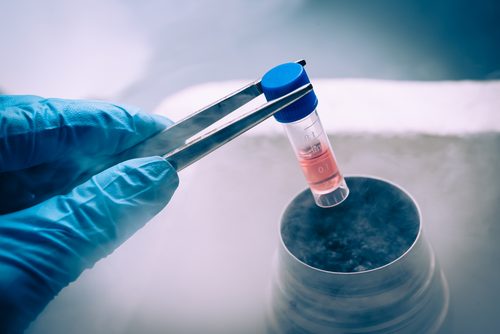Protein Called TRAIL Linked to Lung Fibrosis by Igniting ‘Signaling Cascade,’ Study Reports

A protein in the tumor necrosis factor (TNF) alpha family, called TRAIL, regulates a signaling cascade that promotes pulmonary fibrosis, researchers report, suggesting this protein opens potential new avenues for treating PF.
The study, “TRAIL signals through the ubiquitin ligase MID1 to promote pulmonary fibrosis,” was published in the journal BMC Pulmonary Medicine.
Inflammation is thought to be a main player in pulmonary fibrosis. An inflammatory response calls and activates fibroblasts, the cells responsible for the tissue healing process and scar formation. In the lung, fibroblasts and activated fibroblasts, called myofibroblasts, can produce an excess of collagen leading to fibrosis.
However, clinical trials into anti-inflammatory therapies like etanercept failed to slow disease progression. Etanercept, marked as Enbrel (among other brand names) and approved to treat rheumatoid arthritis, neutralizes TNF-alpha, an important molecule produced during inflammation.
In previous studies, researchers saw that a protein of the TNF family — TRAIL, which stands for tumor necrosis factor-related apoptosis-inducing ligand— was involved in fibrosis development in mouse models of allergy and other airway diseases. TRAIL activates an enzyme called E3 ubiquitin ligase midline-1 (MID1), which block the activation of protein phosphatase (PP)2A. Inactive PP2A promotes cellular processes that lead to collagen production, and subsequently fibrosis development.
The Pulmonary Fibrosis News forums are a place to connect with other patients, share tips and talk about the latest research. Check them out today!
Researchers now investigated TRAIL levels in blood samples, and that of MID1 and PP2A in lung tissue, from eight IPF patients and compared it to controls (lung cancer patients with no evidence of IPF).
Results showed that the blood levels of TRAIL and that of MID1 in lung tissue were significantly higher in IPF patients compared to controls. This increase correlated with a trend (although not statistically significant) for lower levels of PP2A.
Moreover, MID1 levels and PP2A activity were associated with a specific measure of lung function, called diffusing lung capacity for carbon monoxide (%DLCO) — a test of the lungs’ capacity to transfer oxygen from the air sacs into the blood. Lower MID1 levels and increased PP2A activity were linked to better lung function.
The team next worked with a mouse model that did not express the TRAIL protein. Results showed that when fibrosis was induced using bleomycin, these mice were protected against fibrotic change. Researchers also found that when fibroblasts were extracted from the animals’ lung tissue and treated with TRAIL, fibroblast proliferation and the production of collagen rose, suggesting a key role for TRAIL in fibrosis development.
Treatment with a potent activator of PP2A led to lower collagen deposition in both mice and primary fibroblasts in the lab, demonstrating that this cellular process could be targeted and possibly slow or prevent fibrosis.
The results suggested that “TRAIL signalling through MID1 deactivates PP2A and promotes fibrosis with corresponding lung-function decline,” the researches wrote, adding their work “may provide novel therapeutic targets for IPF.”






